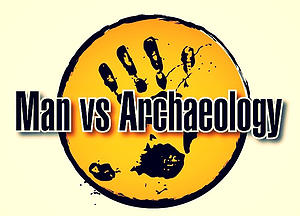In the last two posts (here and here), we looked at the ancient Greek picture of Hades, the abode of the dead, and what hell really was in Hebrew thinking. It wasn’t the immediate pit of flames upon death. We compared it with the Biblical picture which was both similar and very different. The Old Testament used the word Sheol for the abode of the dead, the New Testament used Hades, and Tartarus. Gehenna was a special valley in Jerusalem that was a metaphor for future judgement.
Hades in the Book of Enoch
Apart from Jesus’ parable of Abraham’s Bosom (Luke 16:19-31), there are no descriptions of the actual geography of the underworld in the New Testament. Rather than drawing from pagan Greek myths to depict Hades in Jesus Triumphant, I decided to draw from a respected Jewish source that did provide a “cosmic geography” or conceptual map of the universe that included the underworld. This geography of Hades can be found in the visions of the ancient book of 1Enoch.[1]
Though 1Enoch is not Scripture, I have argued elsewhere for the high regard that the New Testament gives the ancient text as a source for some of its own theological concepts and language.[2] The book consists of several “books,” that recount an expanded version of the Genesis 6 story of the Watchers and Nephilim giants, as well as visions that the prophet Enoch allegedly experienced of angels taking him around the earth, up into the heights of heaven, and down into the depths of Hades (which are actually arrived at by going to the “ends of the earth” rather than descending down into the earth).
Unfortunately, these visions are obscure, overlapping, and at times contradictory, so scholars have disagreed over their interpretation as well as their actual cosmic geography. I have attempted to use my own reading of the text and integrate it with several of these scholarly viewpoints that can be found analyzed in the book, A Study of the Geography of 1 Enoch 17-19, by Kelley Coblentz Bautch.[3] Imagination is required!
Since Enoch’s “map” is cosmic, it includes Sheol/Hades as well as the heavens and the earth. But some scholars have argued that Enoch’s entire journey is to the realm of the dead.[4] So I decided to use the ancient Near Eastern (and Jewish) notion of “on earth as it is in heaven” (Matt. 6:10) or “as above, so below,” to apply to the underworld as well.
In this way, the geography of Hades that Jesus follows on his underworld journey, is a reflection of the sacred geography of the earth above (“Sacred geography” means that it does not so much follow physical geography as it does theological meaning).
Since the underworld was believed by the Jews to be under the earth,[5] and accessed by the waters of the Abyss,[6] that was the source of the waters above,[7] I have those waters work as a kind of sky in the dome of the underworld (though not in all places).
The mountains below rise up from Hades to the earth above. So when Jesus is at Mount Zion in Hades, it rises up and penetrates the ceiling of Hades and becomes Mount Zion on earth above them. This fulfills the ancient Near Eastern notion of the cosmic mountains being an axis mundi, a connection between the heavens, the earth, and the underworld.[8]
The circle of Hades matches the circle of the earth above it and likewise has an ocean/river (the Great Sea or Abyss) at its outer reaches that extends beyond the “Four Winds” or “Four Corners” of the earth where the pillars of the earth support the heavens and the earth (1En. 17:5; Prov. 8:27, 29; 1Sam. 2:8; Mark 13:27).[9]
 In this conceptual map, Jerusalem, or Mount Zion is at the center of the earth, and has “the accursed valley” (Gehenna) right next to it (Ezek. 5:5, 38:12; 1En. 26:1-2; 27:2).
In this conceptual map, Jerusalem, or Mount Zion is at the center of the earth, and has “the accursed valley” (Gehenna) right next to it (Ezek. 5:5, 38:12; 1En. 26:1-2; 27:2).
North from that center resides Mount Hermon, the “rock” (mountain) that Jesus said God would build his new kingdom church upon.[10] This mountain is described as “reaching to the heavens” and as being the celestial storehouse of the luminaries and storms (1En. 17:3). Many rivers flow from it, including a river of fire and a river of “living waters” (17:4-8), and it is guarded by fiery beings who take human shape (17:1). This “source of the waters” is a reflection of the cosmic Mountain of Eden and it’s source of living waters (Ezek. 28:13-14).[11]
In the south are seven mountains of precious stones arranged in a perpendicular layout. The central mountain burns with fire day and night, and is called the “throne of God,” where God will come down at the final judgment. These elements suggest it is Mount Sinai (1En. 24-25).
In the west are “wintery winds” and the “great darkness,” where another mountain hosts “hollow places” for the souls of all the dead. The righteous are separated from the sinners, much like the chasm separates the righteous in Abraham’s Bosom from the sinners in the parable of Lazarus. (Luke 16:19-26; 1En. 17:6; 22:1-14).
In the east are “great beasts and birds” at the ends of the earth (1En. 33:1). Tartarus is further “beyond the edge of the earth,” where the earth meets to uphold the vault of heaven (1En. 18:10).[12] This is where the angels who sinned in Genesis 6 are kept imprisoned in gloomy darkness (2Pet. 2:4; 1Pet. 3:18-20). They are in deep pits or chasms that are like fiery pillars. (1En. 18:10-16).
There is much more detail that can be quite confusing to follow, so I have included an illustrated map with some of the major elements adapted from Bautch and my own reading of 1Enoch.

Can We Trust This Ancient Cosmology?


















